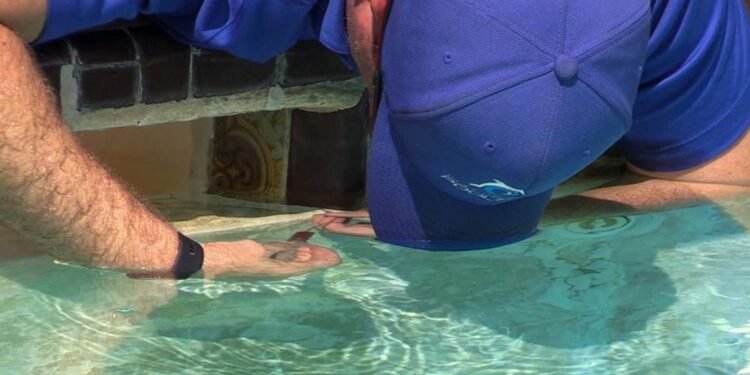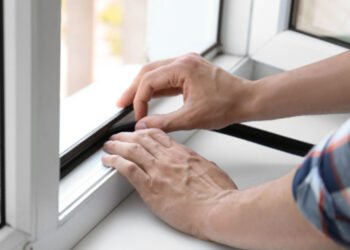Repairing a leak in your swimming pool can seem like a daunting task, but with the right approach, it can be manageable and effective. A leak not only wastes water but can also lead to more significant structural issues if not addressed promptly. This guide will walk you through the essential steps to identify and repair leaks in your pool, ensuring it remains a safe and enjoyable space. From pinpointing the leak’s location to applying the correct repair methods for various pool types, we’ll cover everything you need to know to restore your pool to perfect condition.
Identifying the Source of the Leak
The first step in repairing a leak in your swimming pool is to accurately identify its source. Start by performing a simple bucket test. Fill a bucket with water and place it on the first or second step of your pool, ensuring the water level inside the bucket is the same as the pool water level. After 24 hours, compare the water levels. If the pool water level has dropped more than the bucket’s water level, you likely have a leak. This test helps to determine whether the water loss is due to a leak or just evaporation.
Next, inspect the pool’s equipment and plumbing. Check the pool’s pump, filter, heater, and associated plumbing for any visible signs of leakage or damage. Look for wet areas around the equipment pad and listen for hissing sounds that might indicate escaping air or water. Additionally, examine the pool shell, tiles, and fittings for cracks, loose tiles, or gaps around the fixtures. Dye testing is another effective method; add a few drops of pool-safe dye near suspected areas and observe if the dye gets sucked into cracks or gaps, pinpointing the leak’s exact location.
Preparing the Pool for Repair
Once the source of the leak is identified, the next step is to prepare your pool for the repair process. Begin by cleaning the area around the leak thoroughly. Remove any dirt, debris, or algae that could interfere with the repair materials adhering properly. For vinyl pools, ensure the area is smooth and free of sharp objects that could cause further damage. For concrete or fiberglass pools, use a wire brush or sandpaper to create a clean and slightly roughened surface to help the patching material bond effectively.
Next, lower the water level in the pool if necessary. For leaks located above the waterline, this might not be required. However, if the leak is underwater, you may need to partially drain the pool to expose the damaged area fully. Be cautious not to drain the pool too much, as this can cause structural damage, especially in fiberglass pools. Follow the manufacturer’s guidelines and local regulations for proper draining procedures. Once the area is prepared, gather all necessary repair materials and tools, ensuring they are appropriate for your pool type. Having everything ready will streamline the repair process and help achieve a lasting fix. And if the job feels overwhelming, do not hesitate to reach out to a professional. It is always a smart move. A trusted expert from a Miami pool leak detection and repair service, or elsewhere, can take it from there.
Repairing Leaks in Different Pool Types
The repair method you choose will depend largely on the type of pool you have vinyl, fiberglass, or concrete. For vinyl pools, patching kits are readily available and often include adhesive and vinyl patches. Start by cutting a patch that covers the leak with at least a 1-inch overlap on all sides. Apply the adhesive to the patch and press it firmly over the leak, smoothing out any bubbles to ensure a tight seal. If the leak is underwater, use a patch kit designed for underwater use, as it includes adhesive that works effectively underwater.
For fiberglass pools, repairs can be a bit more complex. Small cracks or holes can be patched using fiberglass repair kits, which typically include resin and fiberglass cloth. Clean the area around the leak, sand it lightly, and then apply the resin-soaked cloth over the crack or hole. Allow it to cure completely before sanding it smooth and applying a gel coat to match the pool’s finish. Larger damage may require more extensive repairs, potentially including applying multiple layers of fiberglass and resin to ensure structural integrity.
Concrete pools often develop cracks that can be repaired using hydraulic cement or specialized pool repair putty. Clean and widen the crack slightly with a grinder to ensure the repair material adheres properly. Apply the hydraulic cement or putty, pressing it firmly into the crack and smoothing the surface. For significant structural cracks, it may be wise to consult a professional. Hiring a professional pool leak repair company can be beneficial for complex or persistent leaks in any pool type. Professionals have the expertise, specialized equipment, and materials to accurately diagnose and repair leaks, ensuring a thorough and lasting solution. They can also conduct pressure tests and use advanced techniques like electronic leak detection to find hidden leaks that might be missed by visual inspection alone. Investing in professional help can save time, prevent further damage, and extend the life of your pool.
Testing and Maintaining the Repair
After completing the repair, it’s crucial to test the effectiveness of your work before refilling the pool completely. Gradually refill the pool to its normal water level and monitor the area around the repair for any signs of continuing leaks. Use the bucket test again to compare water levels and ensure there is no significant loss of water. Pay close attention to the water level over several days, especially if the leak was substantial, to confirm that the repair is holding.
Regular maintenance is essential to prevent future leaks and prolong the life of your pool. Inspect your pool and its equipment periodically for signs of wear and tear, such as cracks, loose tiles, or damaged fittings. Keep the pool clean and balanced chemically, as imbalanced water can cause corrosion and damage to pool surfaces and equipment. Schedule routine professional inspections to catch and address potential issues early. By maintaining your pool properly and addressing small problems promptly, you can avoid more significant, costly repairs down the line.
Repairing a leak in your swimming pool is a manageable task when approached methodically. By accurately identifying the source of the leak, preparing the area properly, and using appropriate repair techniques for your pool type, you can restore your pool to optimal condition. Testing the repair and maintaining your pool regularly will ensure its longevity and functionality, providing you with a safe and enjoyable swimming environment. Whether you decide to tackle the repair yourself or hire a professional leak repair company, addressing the issue promptly is crucial to prevent further damage and unnecessary costs. With the right approach, you can keep your pool in top shape and ready for use all season long.












